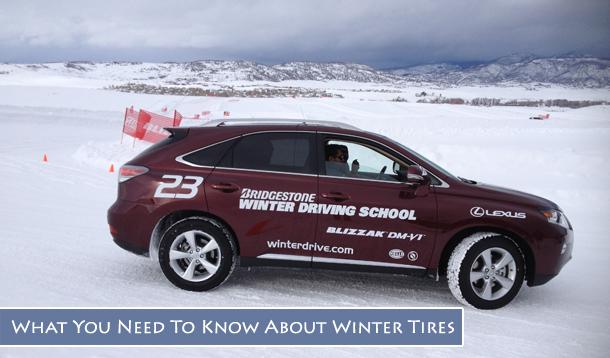
I bought my first car when I was 19 and I live in Ottawa. Based on those two facts, you would think that I am an expert when it comes to winter driving and snow tires—I sure did. But, after attending a day at the Bridgestone Winter Driving School, I felt how Game of Thrones’ Jon Snow must have felt after Ygritte chewed him out that first time...because coming in, when it came to winter driving and snow tires:
You know nothing, Gwen Leron.
So here’s the thing. I’ve driven through many Ottawa winters, and for those of you who have done the same, you know that driving in these conditions can be very treacherous and difficult at times. The techniques I have been using aren’t techniques I was taught, I just learned by experience. What I have been doing has worked really well for me so far, but chances are, these thing may not always work.
The day I spent at the school was filled with lots of great information and I came away feeling more confident with my winter driving skills. The big take-away for me was that winter tires are always a necessity, no ifs, ands, or buts about it. If it snows where you live, no matter how much or how little, winter tires should be mandatory when it comes to staying safe on the roads. A good tip they gave us was: If you can see your breath, it’s time to consider switching to winter tires.
The star of the day at the driving school were the new Bridgestone Blizzak WS80 winter tires that will be on the market this July, in time for the 2014/2015 winter driving season. We got to test them out in a few different situations.
First, we had the chance to try out the new Blizzak’s on an ice rink to mimic black ice conditions. We started at one end of the rink and we were asked to floor the gas. When we got to about the middle of the rink, we were told to slam on the brakes. Thanks to ABS and the Blizzak’s, there were no crashes into the wall. We were also given the chance to do the same using a competitor tire. The results were less impressive.

We then had the chance to try the tires out on the snow and ice-covered courses at the driving school and to work on our winter driving skills:

In all the testing and comparison’s to competitor brands we did throughout the day, the Blizzak WS80's came out on top each time.
Still not convinced you need winter tires? Here are some myths and truths about winter tires that all drivers should know:
When it comes to winter tires, temperature matters. All tire rubber will begin to stiffen as the weather gets colder, but the latest generations of winter tires remain flexible in freezing temperatures, maintaining traction and available grip. Your tires are the one thing between your car and the pavement. As temperatures approach freezing, winter tires can provide increased traction, braking, and handling.
Four-wheel drive gets you going by making the most of tire traction, but it doesn’t improve stopping or cornering. That depends on tire grip. It doesn’t matter whether you have four-wheel drive or two-wheel drive, when it comes to stopping it’s all about tire grip. That’s when winter tires are especially important. Installing winter tires on all wheel positions will improve surface grip in most winter road conditions.

All-season tires are designed with both winter and summer performance in mind, but they do not offer maximum performance in either season. Winter tires are designed to remain flexible even at extremely low temperatures.
An all-season tire will not provide maximum traction in wintery conditions as a true winter tire does. When you equip your vehicle with winter tires you may be better prepared for changing road conditions.
Never reduce tire pressures in an attempt to increase traction on snow or ice. Deflating your tires simply doesn’t work in this situation. In fact, you could end up damaging your tires if you drive on them under-inflated.
The bottom-line is, to stay safe when driving in the winter, you need a combination of good-quality winter tires and good winter driving skills. Two things I now know a lot about.
***
Speaking of tires, did you know that when you change over your tires this spring, you can purchase eco-friendly tires for your car? And don't stop there, here are 10 ways to make your car more eco-friendly.